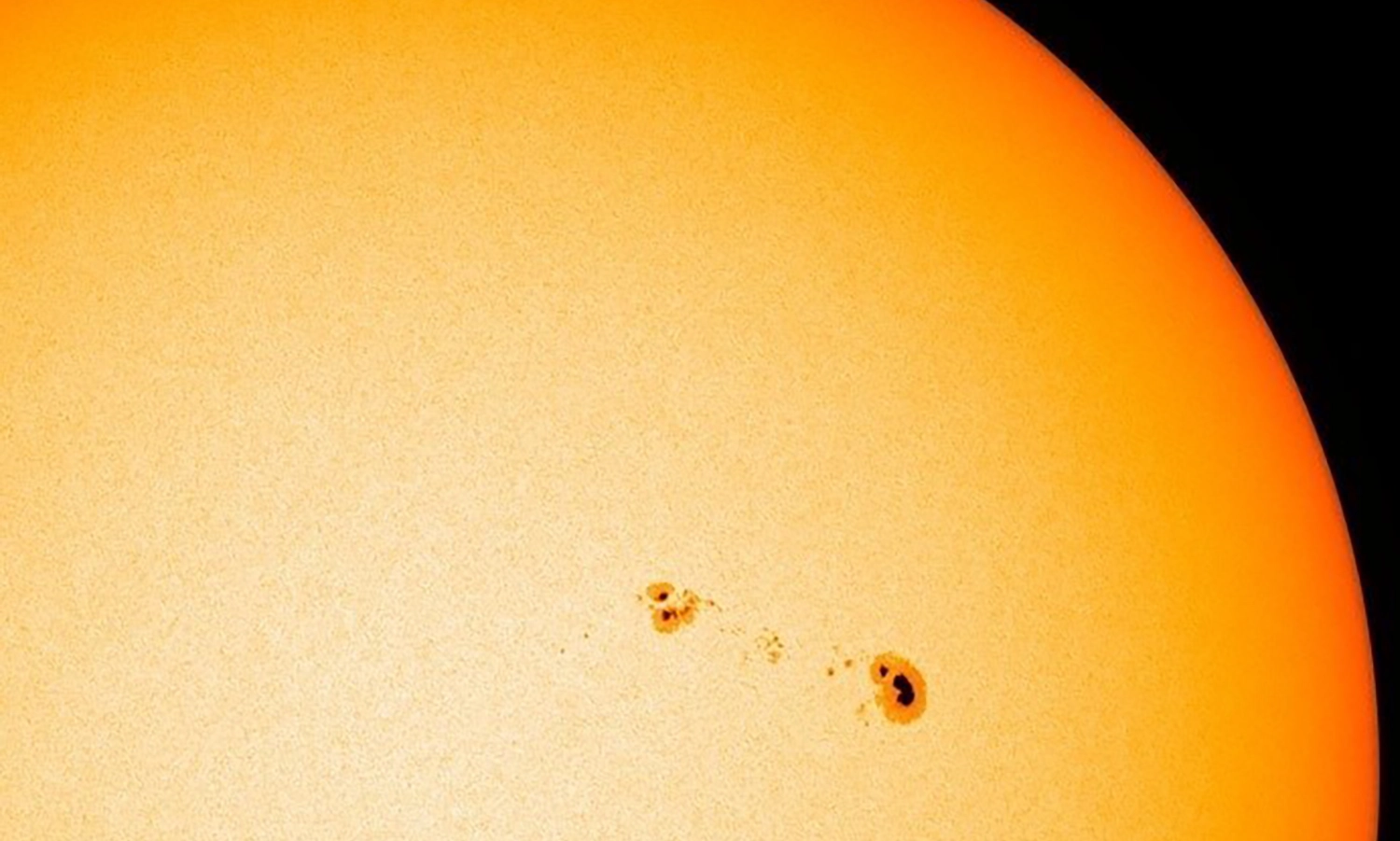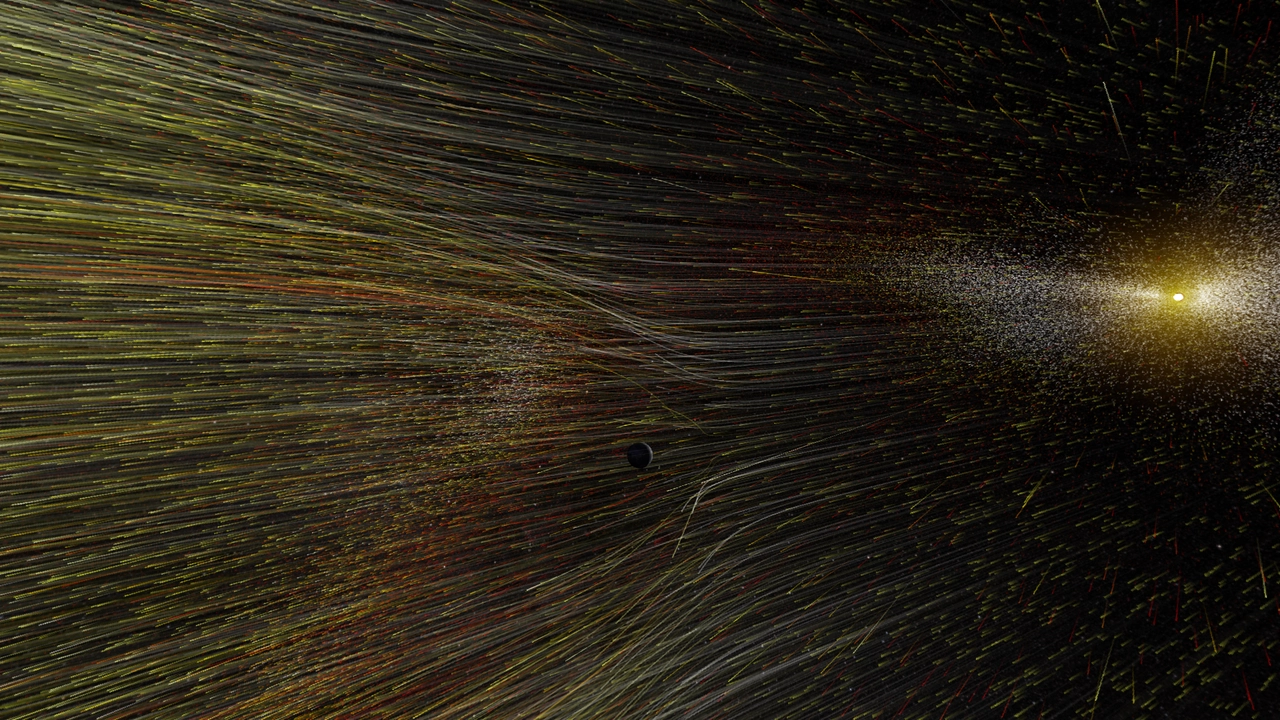
HWS News
8 November 2023 • STEM Countdown to the Total Solar Eclipse T-minus 5 months: Solar Magnetic Fields
Each month, Hobart and William Smith will release an educational newsletter authored by Associate Professor of Physics Leslie Hebb about the Sun leading up to the total solar eclipse that will pass over campus in April 2024. Here is November's letter:
Today is exactly 5 months until the total solar eclipse in Geneva! Let’s talk about how the Sun is a giant magnet.
NASA observes the Sun 24 hours a day, 7 days a week using 19 active space satellites. The primary goal of these missions is to fundamentally understand the Sun’s magnetic field and how it influences Earth and the other planets in our solar system. This is the continuation of a tradition started in 1610 with the first telescopic observations of the Sun that recorded detailed images of sunspots.
Sunspots are small, dark, transient features that emerge on the surface of the Sun and persist for days to weeks before disappearing. As far back as the 19th century, scientists noticed a cyclic pattern in the number and position of the sunspots that appeared. The Sun starts its 11-year cycle having no spots at all. This time period is called the Solar minimum. When spots do appear, they do so only at specific latitudes around plus and minus 30 degrees from the equator. As spots come and go over the next 11-years, the new spots tend to appear closer to the equator than the previous ones. At the same time, the total number of spots visible on the Sun increases to a maximum and then falls back to zero ready for the next cycle to begin.
Early measurements of sunspots were the first observations of the Sun’s underlying magnetic field. Because the Sun is so hot, its atoms are ionized meaning the electrons and protons that make up the Sun are not bound to each other.

This results in a mix of fast-moving, charged particles called a plasma. Any time charged particles move, they generate a magnetic field. They also get accelerated further by any existing magnetic field. This intertwined effect makes the Sun’s magnetic field very complex. We now know that sunspots appear in locations where the Sun’s interior magnetic field penetrates the surface, and their cycle is thought to be a consequence of the charged plasma being moved in a predictable way both as the Sun rotates and as convection causes the plasma to well up from the interior.
Sunspots were the only manifestation of the magnetic field that were visible to those early scientists, but now we can directly observe the underlying magnetic field that causes them and many other magnetic phenomena. NASA’s Parker Solar Probe is making repeated flybys through the Sun’s corona (its super-heated outer layer) to make direct measurements of the speed and density of the charged particles streaming out of the Sun in the solar wind. The solar wind is the name for the constant flow of electrons and protons that are accelerated by the Sun’s magnetic field to a million miles per hour before flying out of the Sun and across the solar system. In addition, since 2010 NASA’s Solar Dynamics Observatory has been observing the entire Sun every 12 seconds in 12 different ultraviolet wavelengths (or colors) to capture sudden, bright flares of light and explosive plumes of escaping plasma that occur when magnetic fields twist, cross, and reconnect.
These examples represent the tip of the iceberg of observations collected by NASA’s mission fleet studying our most important star.
Click here for more information about the Year of the Sun.
In the photo above, an intensity image shows the Sun's prominent star spots. The image was captured with the Solar Dynamics Observatory in 2017. Credit: NASA



